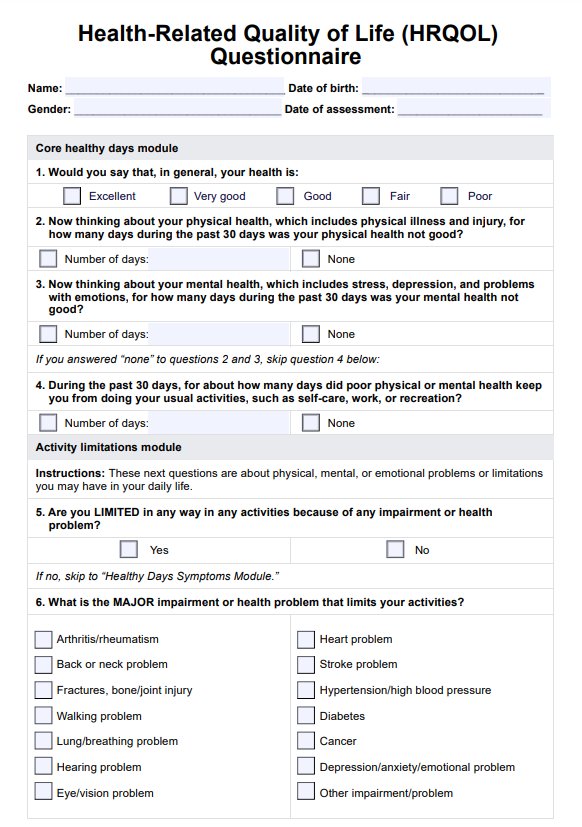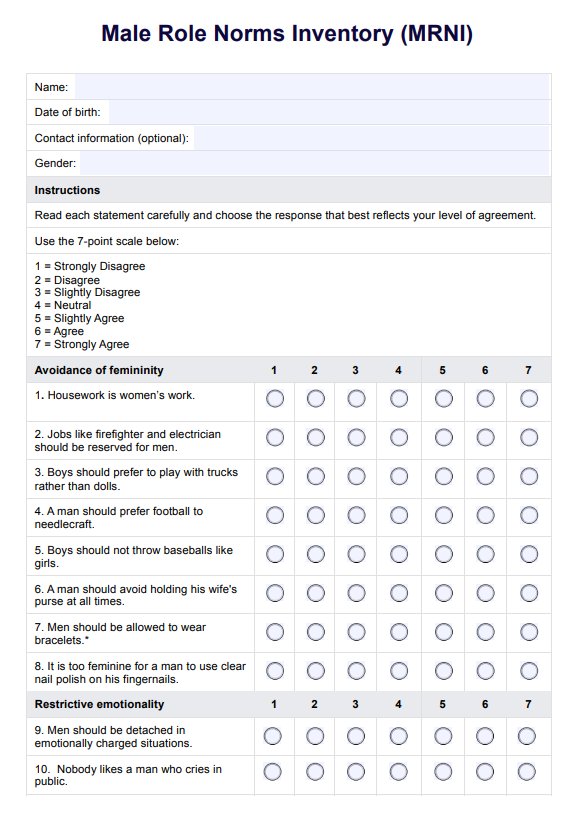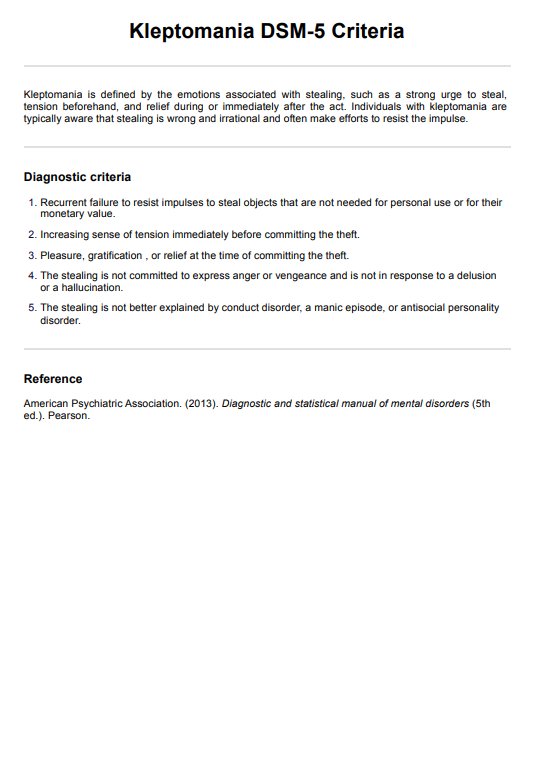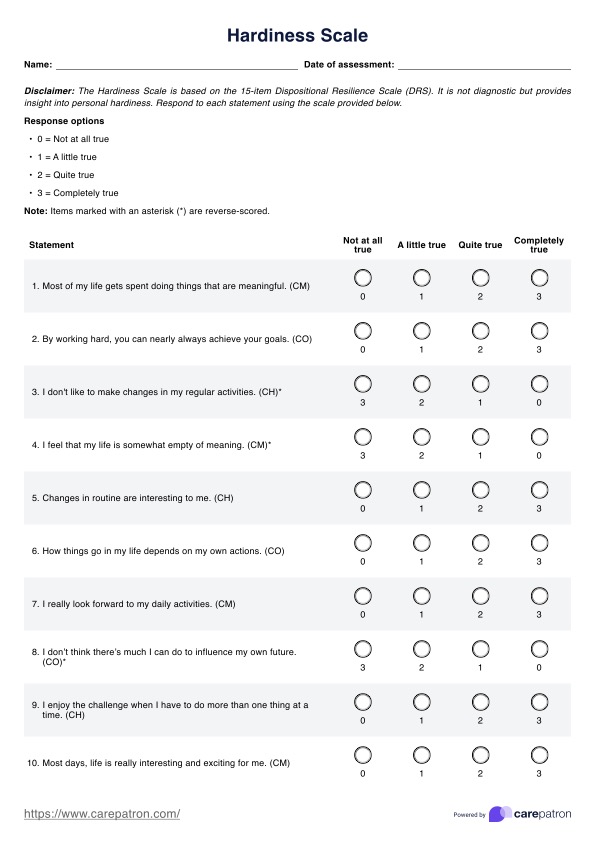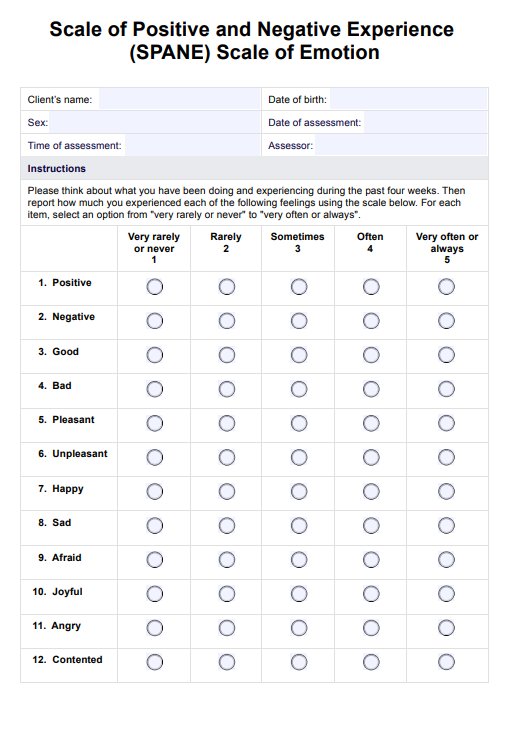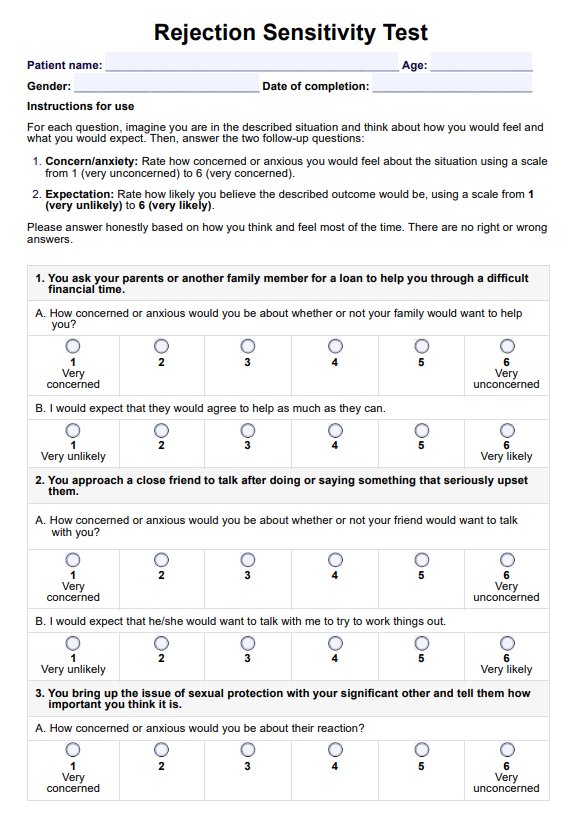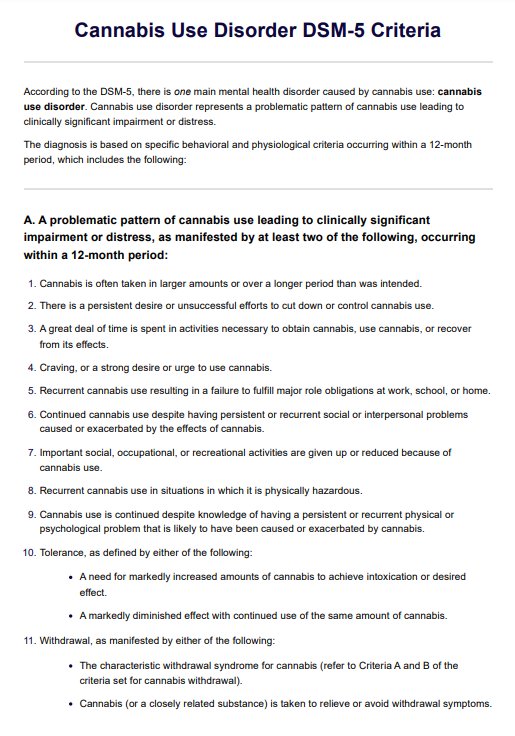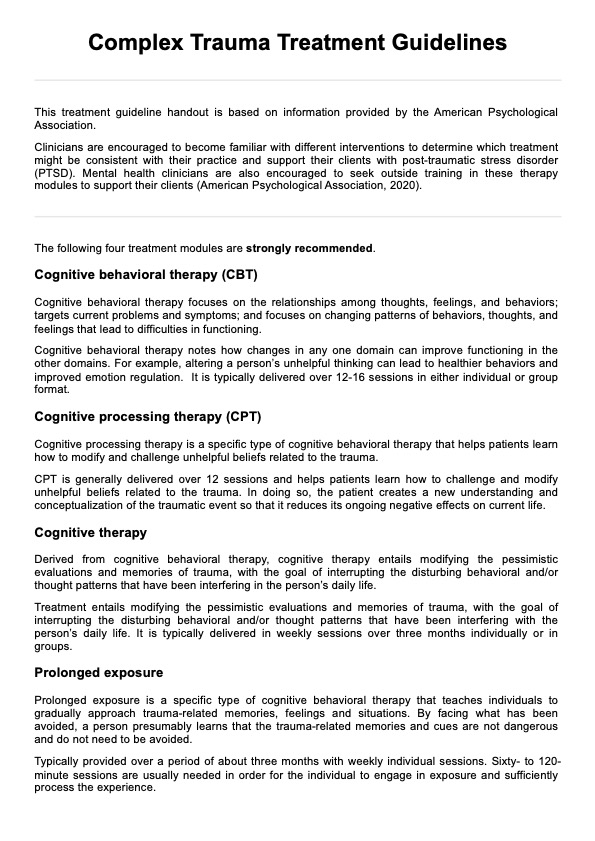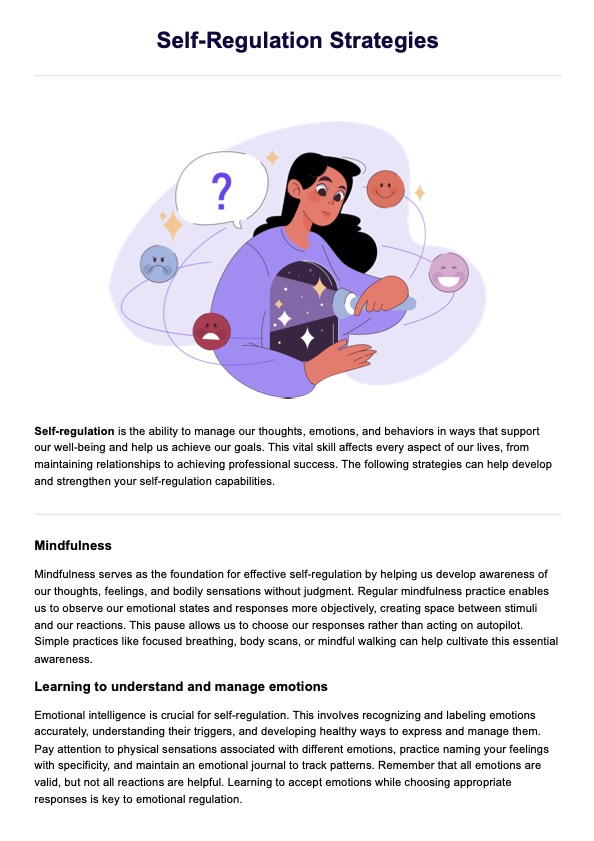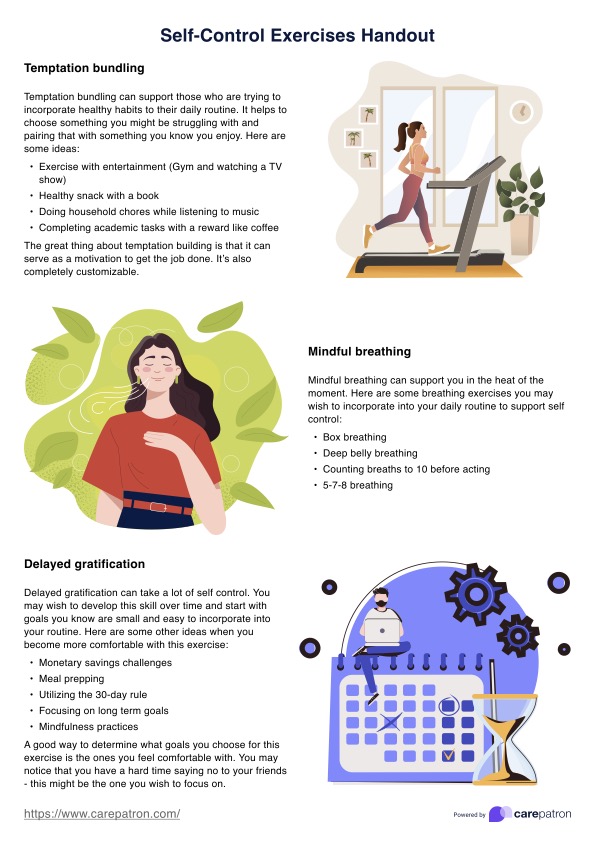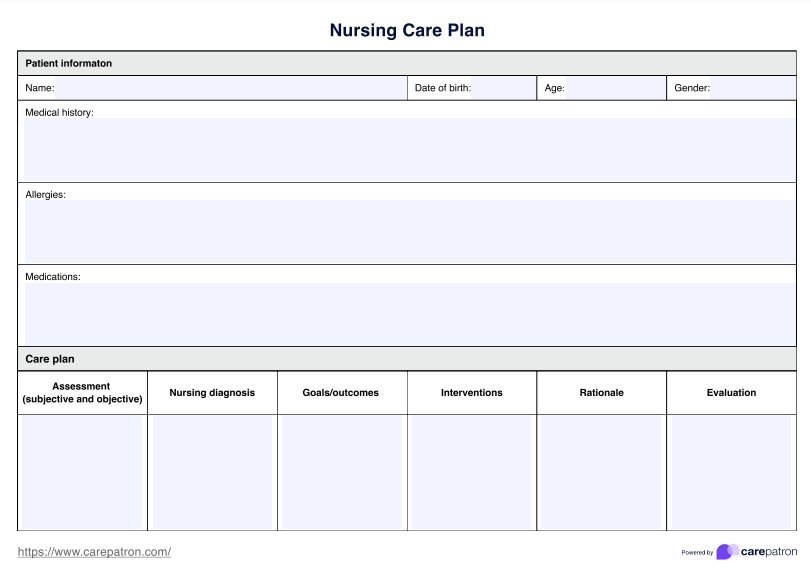Major Depressive Disorder Treatment Plan
Get access to a free Major Depressive Disorder Treatment Plan and example. Streamline your clinical documentation with our free template resource.


What is a Major Depressive Disorder Treatment Plan?
A treatment plan for major depressive disorder (MDD) is a comprehensive approach tailored to address the individual needs of the patient, aiming to alleviate symptoms of depression and improve overall functioning. It integrates medication, psychotherapy, lifestyle adjustments, and sometimes advanced treatments.
Medications like selective serotonin reuptake inhibitors (SSRIs) and serotonin-norepinephrine reuptake inhibitors (SNRIs) are commonly used due to their efficacy and safety. At the same time, other options are available for treatment-resistant cases. Psychotherapies such as cognitive behavioral therapy (CBT) are essential for addressing negative thought patterns, with other approaches like interpersonal therapy (IPT) also proving beneficial.
Combining medication and psychotherapy often yields the best results, addressing both the biological and psychological aspects of depression. Lifestyle modifications, including regular exercise, a healthy diet, and adequate sleep, are critical in managing symptoms of mood disorders. This multi-faceted approach to cognitive therapy aims to alleviate symptoms, address underlying causes, and equip patients with strategies for long-term management (Karrouri et al., 2021).
Major Depressive Disorder Treatment Plan Template
Major Depressive Disorder Treatment Plan Example
How to use this MDD Treatment Plan
To effectively use the Major Depressive Disorder Treatment Plan form, follow these detailed steps:
Step 1: Client information
Fill in the client's details, including name, date of birth, gender, phone number, email address, and consultation date. This section ensures accurate identification and contact information for the patient.
Step 2: Diagnostic criteria
Document the specific diagnostic criteria met by the client to confirm the diagnosis of MDD. Accurate documentation helps track progress and tailor the treatment plan.
Step 3: Treatment goals
Set specific, measurable, attainable, relevant, and time-bound (SMART) goals for the client. An example goal could be, "Reduce depressive symptoms over the next three weeks." Use validated assessment tools to measure progress. Clear goals provide direction and benchmarks for evaluating the effectiveness of the treatment.
Step 4: Interventions
Detail the interventions planned to achieve the treatment goals. This could include weekly individual therapy sessions focusing on cognitive behavior therapy, medication management, lifestyle modifications, or other relevant therapeutic approaches. Documenting these interventions ensures that all aspects of the treatment are systematically addressed.
Step 5: Recommended medication (optional)
If applicable, list the medications prescribed to the client, including dosage and frequency. This section helps monitor medication adherence and manage any side effects. It also facilitates communication between healthcare providers involved in the client's care.
Step 6: Progress notes
Update the progress notes section regularly with observations from each session or consultation. Include changes in symptoms, client feedback, and any adjustments made to the initial treatment and plan. This ongoing documentation is crucial for tracking the client's progress and making informed decisions about future treatment steps.
Step 7: Client signature
At the end of the form, have the client sign and date the document to confirm their agreement with the treatment plan. This step reinforces the client's commitment to their treatment and legally acknowledges the proposed interventions.
When would you typically use a treatment plan for depression?
A treatment plan for depression is typically employed when individuals exhibit persistent depressive symptoms that significantly impair their daily functioning and quality of life. Mental health professionals utilize treatment plans to address various depression symptoms, ranging from mild or moderate depression to persistent depressive disorder.
In cases of severe depression where symptoms persist despite psychotherapy or talk therapy and lifestyle modifications, antidepressant medication may be recommended as part of the treatment plan. Antidepressants, such as selective serotonin reuptake inhibitors or serotonin-norepinephrine reuptake inhibitors, can help regulate neurotransmitter levels in the brain, thereby reducing symptoms relieve depression.
In instances of treatment-resistant depression or severe depression accompanied by psychotic features, a combination of antidepressant and antipsychotic medication may be prescribed to target both mood and psychotic symptoms effectively.
The decision to initiate a treatment plan for treating depression is guided by a comprehensive assessment conducted by a mental health professional, considering the severity of depression symptoms, individual preferences, and treatment goals. By tailoring treatment plans to the specific needs of each, mental health professionals can strive to treat depression and promote long-term recovery effectively.
Who can use this printable treatment plan?
The printable Major Depressive Disorder Treatment Plan is a valuable resource for healthcare practitioners who are seeking a way to provide comprehensive guidance and support in their depression treatment journey.
Healthcare providers, including psychiatrists, psychologists, and primary care physicians, can integrate the printable treatment plan into their practice to facilitate effective communication and collaboration with patients. The plan is a structured framework for discussing treatment goals, monitoring progress, and adjusting interventions to optimize outcomes.
Caregivers of individuals with major depression can also use the treatment plan as a reference to gain insights into the condition and actively participate in the treatment process. Through this, they can provide valuable assistance and encouragement to their loved ones as they navigate their recovery journey.
Additionally, the treatment plan can be adapted for individuals with co-occurring conditions, such as bipolar disorder, by incorporating appropriate modifications and considerations to address the unique needs and challenges associated with this population.
Benefits of free MDD Treatment Plan template
There are several major benefits to using a free Major Depressive Disorder Treatment Plan template for mental health practitioners. Here are some of the benefits you may get for using a free MDD:
Structured approach to treatment
Utilizing a free Major Depressive Disorder Treatment Plan template provides a structured framework for organizing and implementing treatment interventions, ensuring a comprehensive approach to managing depressive disorders.
Personalized treatment strategies
The template allows for customization based on individual needs and preferences, enabling the inclusion of personalized treatment strategies tailored to address specific symptoms and challenges associated with depressive disorder.
Facilitates communication with healthcare providers
The template facilitates effective communication between individuals and their healthcare providers by documenting treatment goals, therapy sessions, and medication regimens. It also promotes collaboration and shared decision-making in the treatment process.
Enhances adherence to treatment plan
A visual representation of the treatment plan encourages individuals to adhere to recommended interventions, including therapy sessions and medication schedules, promoting consistent, supportive therapy and continuity of care.
Supports continuity of care
In cases where individuals receive treatment from multiple healthcare providers, the treatment plan template promotes continuity of care by ensuring that relevant information is documented and shared across care settings.
Types of MDD treatments
According to recent guidelines and research, the following elements are crucial for effectively managing MDD:
- Medication: Antidepressant medications are often the first line of treatment. SSRIs and SNRIs are commonly prescribed due to their efficacy and safety profiles. Other classes, such as tricyclic antidepressants (TCAs) and monoamine oxidase inhibitors (MAOIs), may be used for treatment-resistant cases.
- Psychotherapy: CBT is widely regarded as an effective form of psychotherapy for MDD. It helps patients identify and modify negative thought patterns and behaviors. Other therapeutic approaches, such as IPT and psychodynamic therapy, can also be beneficial depending on individual needs and preferences.
- Combination therapy: For many patients, a combination of medication and psychotherapy yields the best outcomes. This dual approach addresses both the biological and psychological aspects of depression, improving overall treatment effectiveness.
- Lifestyle modifications: Incorporating lifestyle changes is essential. Regular physical activity, a balanced diet, and adequate sleep can significantly impact mood and overall mental health. Stress management techniques, such as mindfulness and meditation, are also recommended.
- Monitoring and adjustment: Treatment plans should be regularly reviewed and adjusted based on the patient's response. This may involve changing medications, adding new therapies, or modifying dosages to achieve optimal results.
- Support systems: Encouraging patients to engage with support groups and maintain a strong social network can provide additional emotional support and reduce feelings of isolation.
For comprehensive therapy management and effective treatment planning, explore our therapy practice management software. You can also download similar specialized options like our Treatment Plan for Depression Template. These tools are designed to streamline workflows, enhance patient care coordination, and support therapists in delivering personalized treatment strategies. Discover how our resources can optimize your practice and improve client outcomes by visiting our library.
Reference
Karrouri, R., Hammani, Z., Benjelloun, R., & Otheman, Y. (2021). Major depressive disorder: Validated treatments and future challenges. World Journal of Clinical Cases, 9(31), 9350–9367. https://doi.org/10.12998/wjcc.v9.i31.9350
Commonly asked questions
Major Depressive Disorder Treatment Plans are typically created by mental health professionals, including psychiatrists, psychologists, therapists, or primary care physicians, in collaboration with the individual receiving treatment.
A Major Depressive Disorder Treatment Plan typically includes information on the individual's diagnosis, treatment goals, recommended interventions (such as therapy, medication, or lifestyle changes), and ways to track progress.
Implementing a Major Depressive Disorder Treatment Plan involves collaboration between the individual and their healthcare provider(s). It may include attending therapy sessions, adhering to medication regimens, practicing coping skills, and making lifestyle modifications as outlined in the plan.


















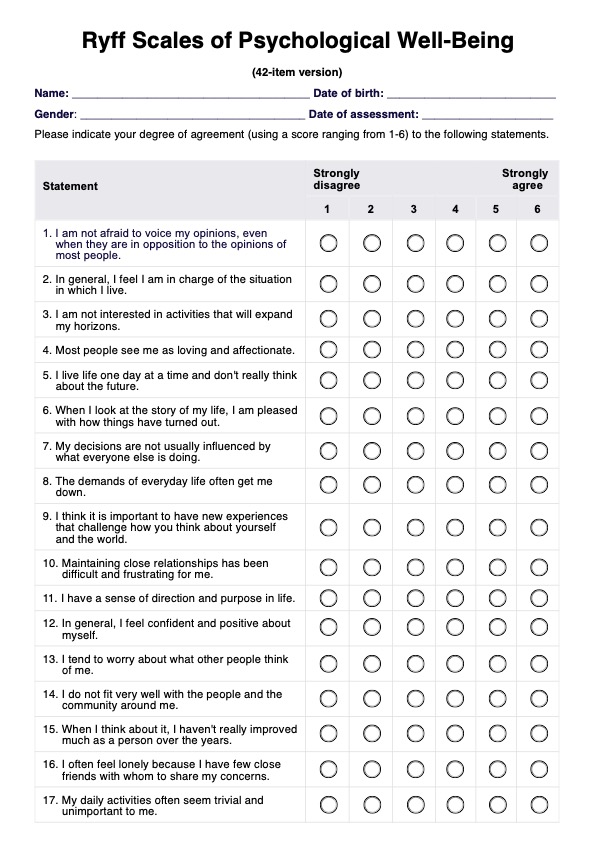
-template.jpg)




